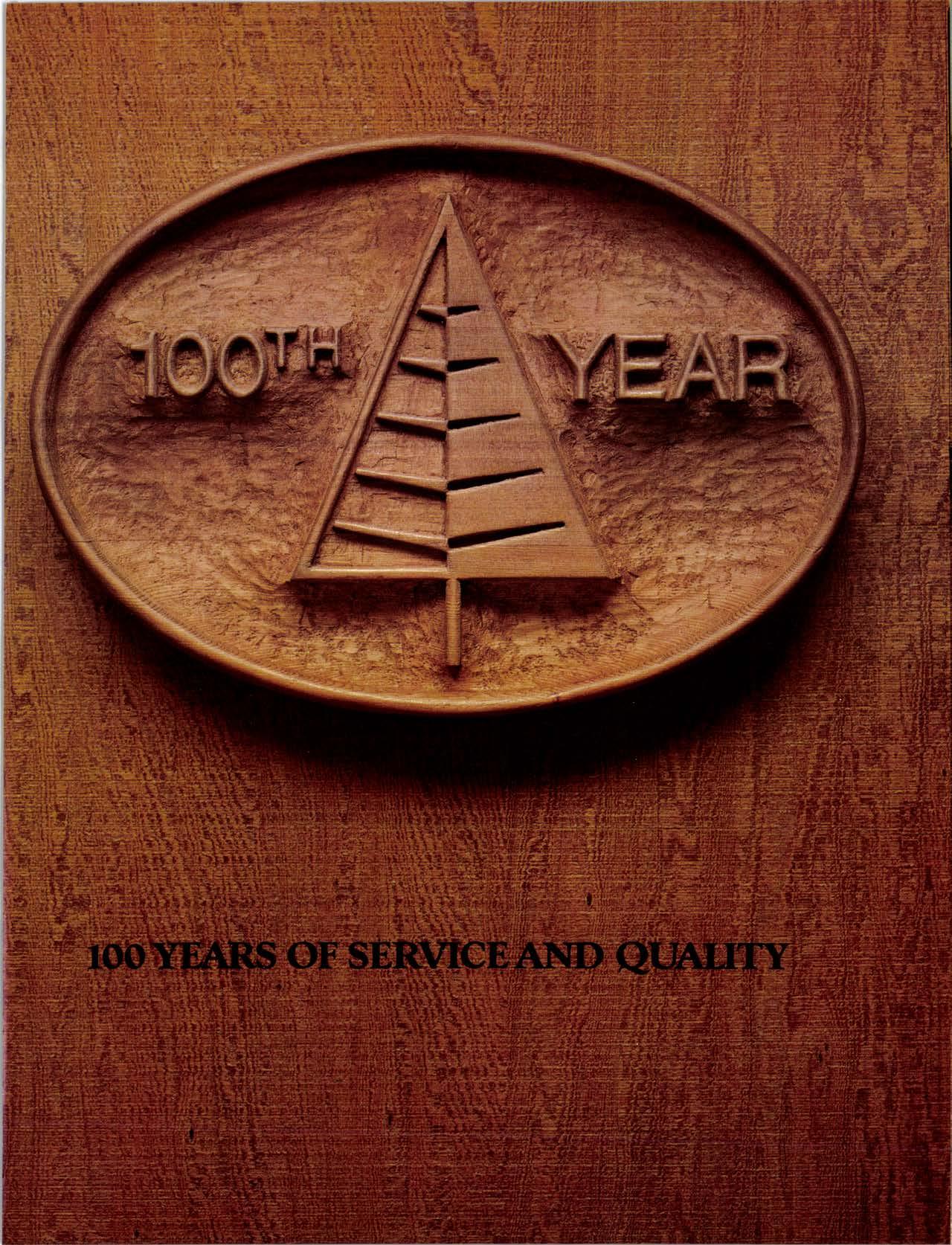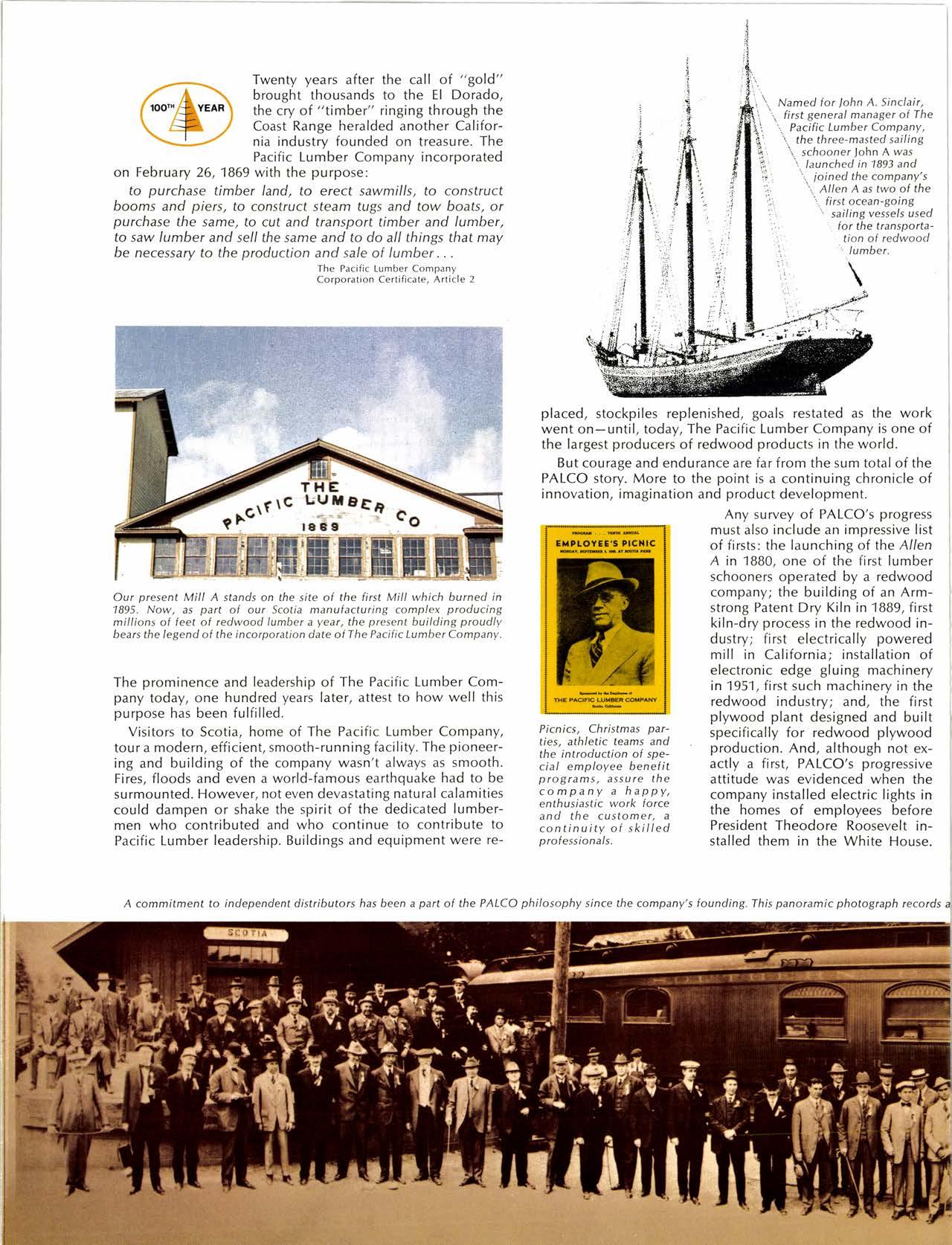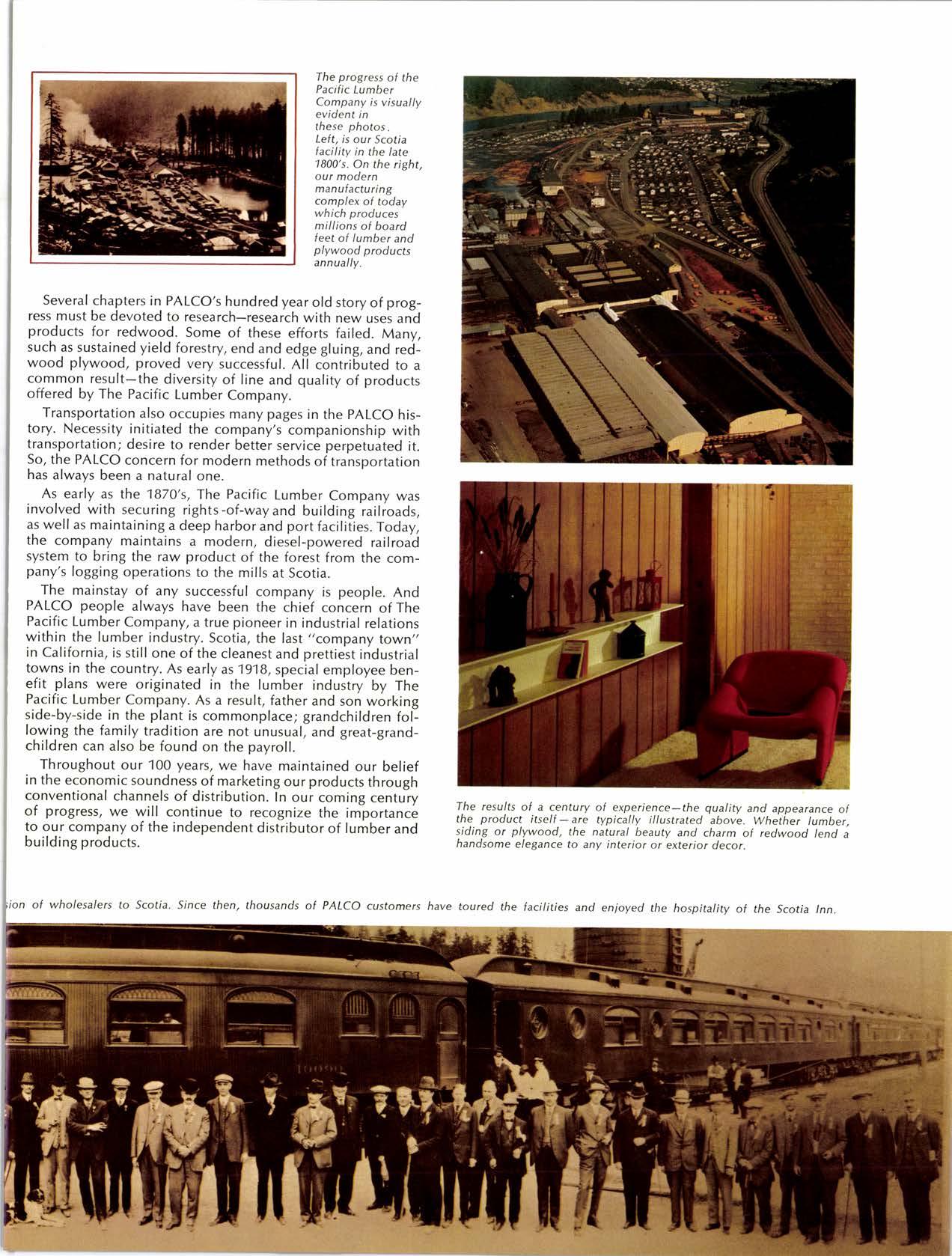
5 minute read
New ideas, products, methods and innovations for all levels of the industry at WBMA exposition
Association, and a special meeting for suppliers and their representatives. S. M. Van Kirk, exec. vp., National Building Material Distributors Association, will lead the program for the suppliers.
Story q] q Glqnce
The always good WBMA annual exposition and convention moves inland this year to Spokane, Wash. Top notch business Programs, both professional and Practical, will be featured.
Climaxing the 66th Annual Western Exposition will be the traditional DinnerEntertainment-Dance Saturday evening.
WBMA president Homer W'. Greer extends to all industry people in the West a cordial invitation to attend the 1969 Wesr ern Exposition in Spokane, Washington, February 20-22, 1969.
He emphasizes the appeal of this event to eueryone across all segments of manufacture and distribution of lumber and building materials.
fN THE friendly and hospitable city of I Spokane, Washington, the 66th annual 'Western Exposition of the Western Building Material Association will be held February 2O-22.
Industry people from throughout the West will see a large array of building products exhibits in the Spokane Coliseum. Business programs and social events will be in the Ridpath Motor Inn.
A sneak preview of exhibits will be held Thursday evening, Feb. 20, for a wide va' riety of interested people such as architects, building contractors, engineering and architectural students, speciflers, realtors, financial institution representatives and dealer employees. All exposition registrants. of course. are also invited. The WBMA board of directors will act as hosts.
The Kick-Ofi Breakfast Friday morning features "Uncork Your Hidden Talents" by Ray Montsalvatge, a well-known in' spirational speaker. Friday's business ses' sions will include an advertising clinic sponsored by U. S. Plywood and presented by the American Newspaper Publishers
A gala opening of exhibits on Friday noon at the Spokane Coliseum will imme' diately follow the business sessions. Enter' tainment by the Silver Spurs, a popular Spokane area group, and a Chuck Wagon lunch and refreshments, all in the exhibit area, will officially open the displays in an atmosphere of "Western" excitement. Exhibits will remain open until 5:30 p.m. on Friday and later in the evening everyone will be at the always enjoyable Western Roundup Mixer.
On Saturday, Feb. 22, a Continental Breakfast will be served at the Coliseum prior to opening the exhibits at 9:00 a.m. Following the closing of exhibits at 1:00 p.m. the All-Industry Luncheon, a regular exposition feature oPen to all men and wo*"t, will be held at the Ridpath. An outstanding Pacific Northwest lecturerauthor-businessman, M. W' "Hap" Ball, will present "Hurnan Relati,ons-The Key To Creater Success" in a refreshingly 1ew and practical way.
Saturday's business program will be one of the exposition's hi$hlights. "The Name ol the Game Is Making Money," a dealer' participating roundtable, will explore the ever-present concern-return on invest' ment. An excellent cross-s€ction of view' points and experience will be represented by a good variety of panelists.

Twenty years aftcr the call of "gold brought thousands to the EI Dorado, YEAR the cry of "timber" ringing through the Coast Range heralded another California industry founded on treasLrre. The Pacific Lumber Conrpany incorporated on February 26, 1869 with the purpose: to purchase tintber land, to erect sawmills, to construct booms and piers, to conslruct -steanl tr/g-s and tow boats, or purchase thc same, to cut anc! transport tintber ancl Iut't'tber, to saw lumber and -se// the san're and to clo all things that ntay be necessary to the procluction ancl .sa/e oi luntbcr
Thc i)J( ili( Lumlrcr ConrPrnt ( ofp()ralron ( crlrfi(ale, Arlicle .l
.\'.)ntp,/ rur /nittt 4. .,nr i.rir. flrst genera/ nr,tnaS;or o/ Ihe Pacific Lu nt ba r Co mpan,t', \. lhc thr('e-m.rstcd -s.ri/ing ''! schooner John A rvas '' /.runcher/ in l8()3 .tnd , joinad lhc conrpanl"-s A//0n A as th,o of thL' iirst ocoan-going sai/ing vesse/s uscr/ lor the lrans/)orta tion oi raclvvood lLtm D('r.
\ placed, stockpiles replenished, goals restated as the work went on-until, today, The Pacific Lumber Cornpany is one ttf the largest producers of redwood prodr-rcts in the world. But courage and endurance are far frorn the sum total of the PALCO story. More to the point is a continuing chronicle of innovation, imagination and product development.
Our present,\Jil/ A -stand.s on lhe -site oi the first Nlill v'hich burnetl in /895. Norr', as part ol our -scot/a nr,]r)ui,rclu/ inli compiCr prorluting millions ot' iaat oi rerlv ctctd Iuntbt::r .r yeJr, the prt'scnl builrling, prr>uc!lt berr-s the lr:gt:nd oi thc lncoryrorution cl;tte oi Thr: ['at:iitc lunhcr Conrp(in\'.
The prominence and leadership of The Paciiic Lumber Company today, one hundred years later, attest to how well this purpose has been fulfilled.
Visitors to Scotia, home of The Pacific Lumber Company, tour a modern, efficient, snlooth-running facility. The pioneering and building of the company wasn't .rlways as smooth. Fires, floods and even a world-famous earthquake had to be surmounted. However, not even devastating natural calamities could dampen or shake the spirit of the dedicated Iumbermen who contributed and wl'ro continue to contribute to Pacific Lumber leadership. Buildings and equipment werc re-
Picnics, Christnra-s partles, ath/r:tlc teams anc/ thc intror!uction oi special emplovce bcncfit proElams, assrrre thc company a happy, enthuslastlc rvork orce :ln (/ th e cus tom ('r, a continuity oi skillatl proless/ona/-s.
Any survcy of I'ALCO's progress must also include an impressive list of firsts: the launching of the A//en A in 1880, one of the first lumber schooners opcrated by a redwood company; the building of an Arm* strong Patent Dry Kiln in 1889, first kiln-dry process in the redr,vood indr,rstry; first electrically powered mill in California; installiition of electronic edge gluing machinery in 195-1 , first sr-rch machinery in the redwood industry; and, the first plywood plant designed and built specifically for redwood plywood production. And, although not exactly a Lirst, PALCO's progre:sive attitude was evidenced when the company installed electric lights in the homes of employees before President Theodore Roosevelt installed them in the White House.
.A commitmant to lnclependent distributors has been a patt ol the PALCO philctsctphy sincc the company's iounding. Tltis panoramic photograph records a

The progress of the Pacific Lumber Company is visually evident in these photos.

Lett, is our Scotia facility in the late 1800's. On the right, our mooern manuf acturing complex of today which produces millions ol board leet of lumber and plywood products annually.
Severalchapters in PALCO's hundred year old story of progress must be devoted to research-research with new uses and products for redwood. Some of these efforts failed. Many, such as sustained yield forestry/ end and edge gluing, and redwood plywood, proved very successful. All contri6uted to a common result-the diversity of line and quality of products offered by The Pacific Lumber Company.
Transportation also occupies many pages in the pALCO history. Necessity initiated the company's companionship with transportation; desire to render better service perpetuated it. So, the PALCO concern for modern methods of transportation has always been a natural one.
As early as the 1870's, The Pacific Lumber Company was involved with securing rights-of-wayand building railioads, as well as maintaining a deep harbor and port faciliiies. Today, the company maintains a modern, diesel-powered railroad system to bring the raw product of the forest from the company's logging operations to the mills at Scotia.
The mainstay of any successful company is people. And PALCO people always have been the chief concern of The Pacific Lumber Company, a true pioneer in industrial relations within the lumber industry. Scotia, the last ',company town,, in California, is still one of the cleanest and prettiest industrial towns in the country. As early as 1918, special employee benefit plans were originated in the lumber industry by The Pacific Lumber Company. As a result, father and son working side-by-side in the plant is commonplace; grandchildren following the family tradition are not unusual, and great-grandchildren can also be found on the payroll.
Throughout our 100 years/ we have maintained our belief in the economic soundness of marketing our products through conventional channels of distribution. In our coming century of progress, we will continue to recognize the importance to our company of the independent distributor of lumber and building products.










